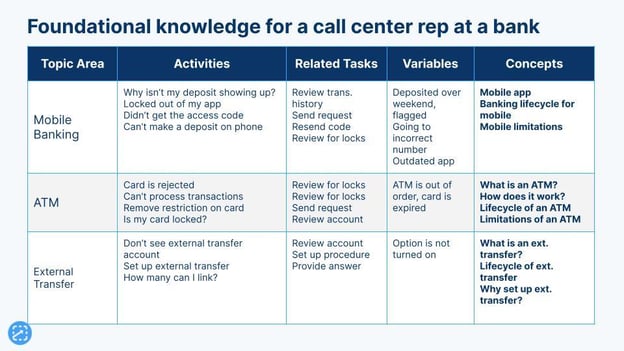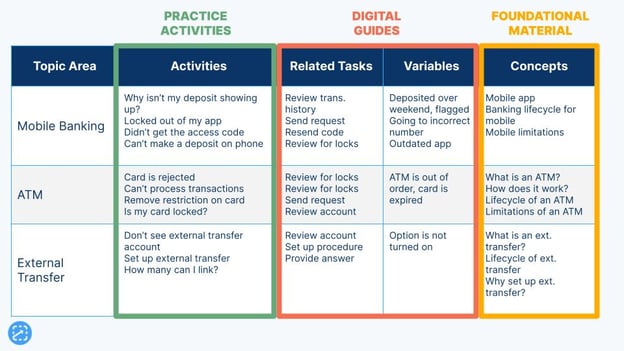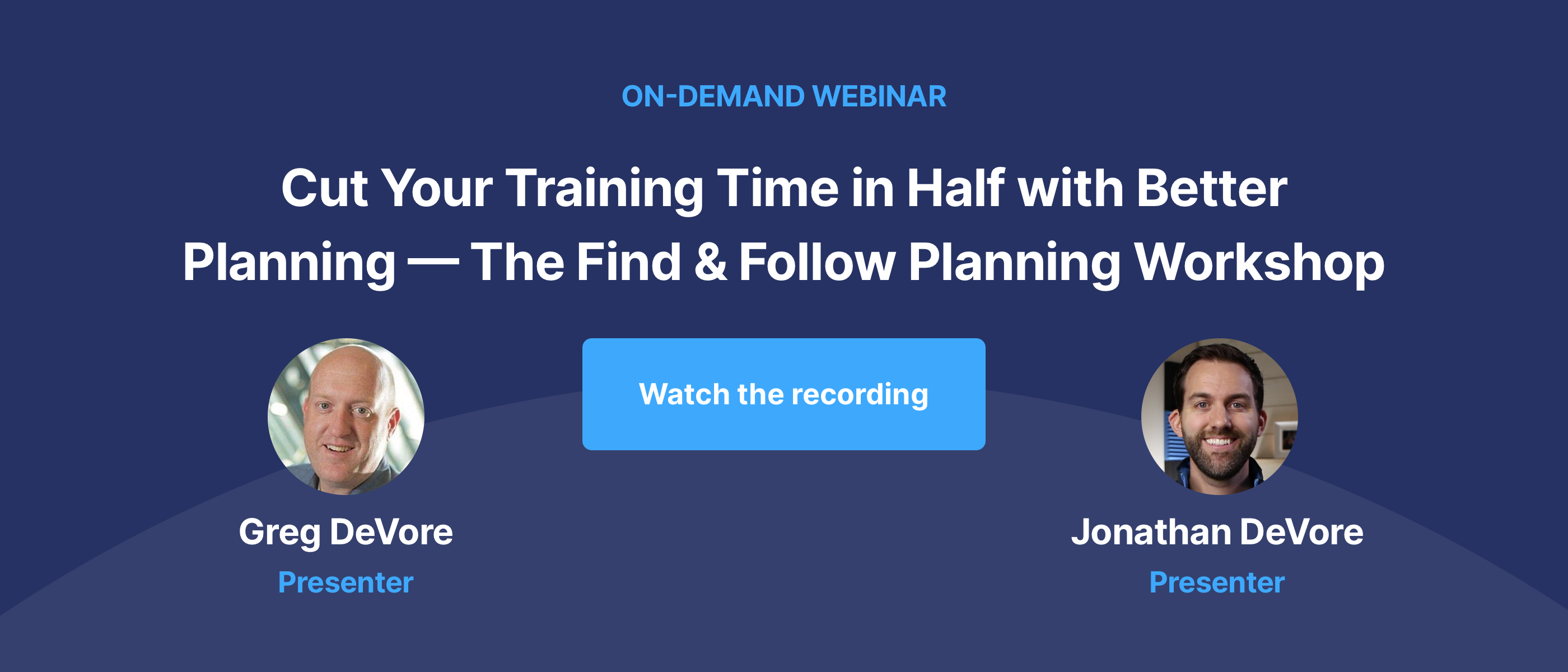Before you launch a new knowledge base, you need a plan. And yet, often companies just jump into creating content.
The problem is that creates chaos and disorder. You can’t track what resources that are being created or even if you are creating the right resources.
That’s why we recommend every company does a Find & Follow Workshop before they begin creating articles for their new knowledge base or building a training curriculum.
A Find & Follow Workshop is a deep dive into what kind of resources your employees need to help them perform the job they’ve been hired to do.
As the co-founder of ScreenSteps — a knowledge ops solution — I’ve seen companies launch faster and have more reliable knowledge bases when they run a Find & Follow Workshop first.
So, how do you run a Find & Follow Workshop in your company?
In this blog post, I explain the three parts of a Find & Follow Workshop as well as how you track the information you discuss during the workshop.
How to run a Find & Follow Workshop
Running a Find & Follow Workshop is a process. A workshop takes approximately 90 minutes to three hours.
Depending on the extent of the role’s expectations, how aligned your team is already, and how familiar you are with the process, the workshop could take more or less time.
During the workshop, your team is discussing the following three points and filling out the Find & Follow Workbook with your answers.
Reminder: Each workshop is for one specific role. For example, this could be for a call center rep assigned to schedule appointments for doctors in the Southeast region.
1. Align
First, you’re going to align your operations and training teams.
We want everyone to be on the same page. There needs to be one way to handle procedures. And that starts by discussing what the role needs to be able to do.
Gather your workshop team. It’s important to get everyone in the room. That can be virtually or in person.
Who needs to attend the workshop?
As part of your workshop, you need someone to represent different parts of the knowledge transfer process. These people need to be familiar with the role and what is expected of employees in this role.
There is no limit to how many people you can invite. However, we find that keeping the groups smaller and just having these four roles represented helps to move the workshop forward while retrieving all the information you need. Those people are:
- The person who fixes mistakes
- The person who answers the questions
- The person who trains
- A tenured person in the target role
2. Define
Once you have your team gathered, it is time to define what employees need to know and what they need to do.
You do this by looking at the big picture of everything this role needs to know to do their jobs. In this section of the workshop, you’ll:
- Identify your end-users (role)
- Identify the end-user’s responsibilities
- Identify topic areas they need to handle (context)
- Identify tools they will use in their jobs
- Identify people they will interact with
3. Dig
Don’t let your team get stuck on the surface level. One of the purposes of your workshop is to understand EVERYTHING that this role needs to be able to do. That means understanding every decision tree and every possible outcome of any given procedure.
When you dig into each topic, you get specific about what you want this role to do. As you dig, you’ll:
- Identify the jobs to be done for each topic area
- Identify the activities or questions surrounding that topic area
- List out related tasks
- Identify the variables (different outcomes)
- Define the context and separate foundational knowledge
When you complete this part of the Find & Follow Workshop, you will have a clear understanding and perfect alignment of exactly what skills and information an employee will need to work independently.
How do you track all of this information?
While your team works through a Find & Follow Workshop, you fill out your Find & Follow Workbook.
The workbook is a table that you fill out from left to right. Each column was part of the “Dig” step above, but I’ll break it down here:
- Topic Area: The category or jobs to be done.
- Activities: The questions or triggers.
- Related Sub-Tasks: The procedures.
- Variables: The various outcomes from the decision trees.
- Concepts: The overarching idea, context, or necessary background information.
Here is an example of what a bank might have a few of these topics in its Find & Follow Workbook.

Once you have completed the Find & Follow Workshop and your workbook is filled out, that becomes your Find & Follow Report. The Find & Follow Report is your guide to all the resources you need to create for your Find & Follow program.
If we use the example above, then these are the digital guides, foundational courses, and practice activities you need to create.

Download a free Find & Follow Workbook here.
Lay the foundation for a successful knowledge base launch
When it comes to building a centralized hub for all of your company’s knowledge, it takes a lot of work. If you immediately begin filling your knowledge base with articles without creating a plan, you could be wasting a lot of time and energy.
With a Find & Follow Workshop, you take a few hours to align your teams and identify the exact resources you need to create. This helps you launch faster and have a clear vision of what needs to be done.
You can run a Find & Follow Workshop on your own or you can hire a ScreenSteps expert to run the workshop for your team. Companies that hire ScreenSteps to moderate their workshop tend to launch faster and avoid more mistakes.
Ready to run a Find & Follow Workshop? Download the free Find & Follow Workbook. If you are considering having ScreenSteps help you with your workshop or have questions about the workshop, schedule a time to talk to a ScreenSteps expert.




